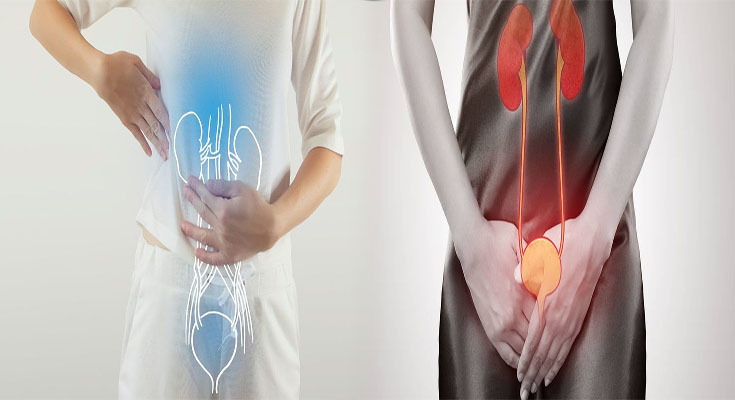Bladder pain is an uncomfortable sensation felt by people who have a bladder disorder. Bladder pain can be felt in the abdomen, pelvis or lower back. Some people with bladder pain also experience the urge to urinate more frequently than usual and experience blood in their urine. Other symptoms of bladder pain include urinary tract infection (UTI) and interstitial cystitis (IC). Bladder pain is often confused with other bladder disorders including overactive bladder and kidney stones. If you’re experiencing symptoms of bladder pain, it’s important to get a diagnosis from your doctor so you can find the best treatment option for your needs!
Bladder pain is an uncomfortable sensation felt by people who have a bladder disorder.
Bladder pain is a common symptom of bladder disease and can be felt in the abdomen, pelvis or lower back. The pain may be sharp or dull, steady or intermittent and tender to touch.
Pain with filling (also known as fullness): This type of bladder pain occurs when your bladder fills up with urine. When this happens, you might feel a need to urinate more often than normal so that there is less pressure on your overfilled organ. Pain with emptying (also known as urgency): Urgency means that you have an overwhelming desire to go right now! This feeling can come on suddenly or gradually increase over time until you find yourself running out the door at work because there’s no stopping it! Urgency is often accompanied by frequent trips to the bathroom–even after just finishing urinating–because your body wants more room inside itself by expelling all fluids possible so there isn’t any left behind inside its walls where they might cause infections later down line…
Pain can be felt in the abdomen, pelvis or lower back.
Bladder pain can be localized or generalized. It may be felt in the abdomen, pelvis or lower back.
The bladder is located behind your pubic bone, between your legs. It’s about the size of a small cantaloupe melon and holds about 1/2 cup (125 ml) of urine at any given time. The urethra is a tube that runs from your bladder through to outside of your body where it lets out urine from your kidneys into the toilet bowl or sink when you urinate (pee).
Some people with bladder pain also experience the urge to urinate more frequently than usual and experience blood in their urine.
Some people with bladder pain also experience the urge to urinate more frequently than usual and experience blood in their urine. Urinary frequency is an indication that your bladder isn’t draining properly, which can be a symptom of bladder pain.
Blood in your urine can be a sign that you’ve developed a urinary tract infection (UTI). If this is the case, then it’s likely that both UTIs and BPS/IC overlap significantly in their symptoms–but they’re not interchangeable terms or conditions!
Some people might also experience pain when their bladder fills up with urine.
You may also experience pain when your bladder fills up with urine. This can happen to people who have a chronic condition called interstitial cystitis (IC), which causes inflammation and irritation of the bladder lining.
IC is common in women, especially those who have had children. It’s thought to be caused by an autoimmune disorder that affects the nerves in the bladder wall, causing them to fire off signals of irritation even when there’s no infection or other problem present. Because IC is hard to diagnose, many doctors won’t make a diagnosis until they’ve ruled out other possible causes for symptoms like frequent urination and pain during sex–so it could take some time before you get diagnosed if this is what’s going on!
Other symptoms of bladder pain include urinary tract infection (UTI) and interstitial cystitis (IC).
If you’re experiencing bladder pain, it’s important to know that there are other conditions that can cause similar symptoms. One of these is urinary tract infection (UTI), which is an infection in any part of your urinary tract. This includes:
- The urethra (the tube that carries urine from your bladder out of your body)
- Your kidneys
- Your bladder
Bladder pain is often confused with other bladder disorders including overactive bladder and kidney stones.
Bladder pain is often confused with other bladder disorders including overactive bladder and kidney stones. Overactive bladder (OAB) is a common condition that causes frequent urination, urgent need to urinate, sometimes without even being aware of it. Kidney stones are small, hard deposits that form in the kidneys and can sometimes cause severe pain when they pass through your urinary tract.
Bladder pain can be caused by a UTI or IC but there are many other possible causes as well such as:
If you’re experiencing symptoms of bladder pain, it’s important to get a diagnosis from your doctor so you can find the best treatment option for your needs.
If you’re experiencing symptoms of bladder pain, it’s important to get a diagnosis from your doctor so you can find the best treatment option for your needs. Bladder pain can be treated with medication, surgery or bladder training.
Bladder retraining involves gradually increasing how much time between bathroom breaks while decreasing the amount of liquid consumed at each break. This is done through careful monitoring and tracking over time until patients reach their desired goals.
Bladder relaxation techniques include deep breathing exercises and meditation as well as biofeedback therapy using sensors placed on the skin around areas where tension builds up in response to stressors such as anxiety or painful urination episodes (also called interstitial cystitis).
If you’re looking for more information on your bladder and its many functions, be sure to do some research!
If you’re looking for more information on your bladder and its many functions, be sure to do some research! The bladder is a hollow organ that stores urine until it’s time to urinate. It’s part of the urinary system, which also includes two kidneys and two ureters (tubes that carry urine from the kidneys to the bladder). The bladder is located in the lower abdomen below your belly button and surrounds several muscles that help control urination.
The urethra–the tube through which you pee–opens up at both ends: one end leads into your body through a narrow slit called an opening or sphincter muscle; the other end leads out from underneath this muscle where it empties into another organ called urethral caruncle (also known as Cowper’s glands). This second opening allows semen (the fluid containing sperm) produced by male sex organs during sexual intercourse with females as well as ejaculate fluid produced by masturbation or oral sex without penetration between partners’ bodies since only males have Cowper’s glands while both genders have penises/vaginas depending on whether they’re male or female respectively…
If you’re looking for more information on your bladder and its many functions, be sure to do some research!





